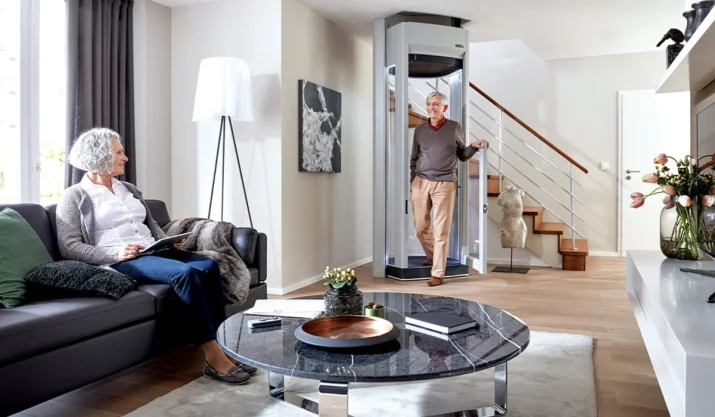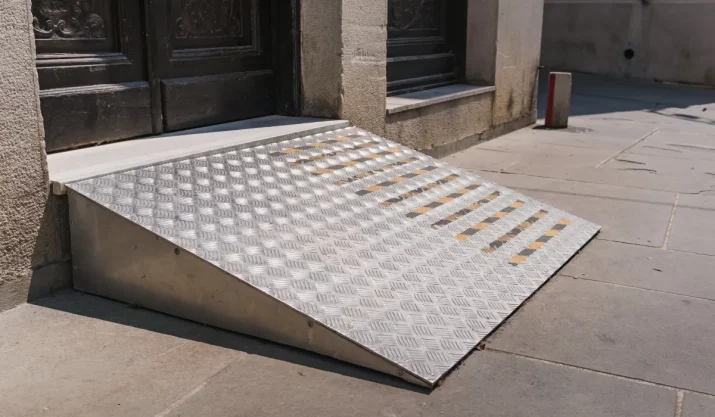What to Know Before Installing a Home Elevator

Table of Contents
- Key Takeaways
- Know Your Home’s Layout and Available Space
- Type of Elevator for Your Home
- Drive System and Maintenance of the Elevator
- Focus on Safety Features and Rules
- Know the Costs and How It Affects Your Home’s Value
- Plan for the Installation Process
- Customize for Comfort and Style
- Find the Right Elevator for Your Home—Get a Free Quote
Adding a home elevator can make your home safer, more comfortable, and even more valuable. Many homeowners choose to install one to help with mobility needs, plan for aging in place, or add a modern feature to their home. But before you start your home elevator installation, there are some key things to understand.
Let’s walk through what you should know before making this big decision.
Key Takeaways
- Home size and layout matter because some elevators need more space and special rooms like a machine room.
- Each elevator type offers different benefits so choose one based on your space, needs, and budget limits.
- Installation time and cost vary but the right elevator adds comfort, safety, and value to your home.
- Customizable options, safety features, and expert help make it easy to find the best elevator for your home.
Know Your Home’s Layout and Available Space
First, you need to figure out where the elevator will go. Some elevators take up more space than others. A traditional in-home elevator might need a hoistway and elevator shaft, which means it takes up more square feet and may need a machine room.
- If you don’t have a lot of space, a shaftless or pneumatic vacuum elevator might be better since they have a small footprint and are easier to fit into an existing home.
- If you’re doing a retrofit in an older house, you might have fewer options than in a new construction or remodel.
In a new home, you can plan ahead and include space for the residential elevator in your design.
Type of Elevator for Your Home
Not every elevator works for every home or situation. The type of elevator you choose depends on your needs and budget.
Hydraulic elevators are strong and smooth, but they usually need a machine room. Pneumatic vacuum elevators are energy-efficient and don’t need a pit or machine room, which saves space.
- If you or someone in your home uses a wheelchair, you’ll want a residential lift or vertical platform lift that’s wheelchair accessible.
- If you’re not sure which type is right, consider visiting a showroom or contacting an elevator company for advice.
Drive System and Maintenance of the Elevator
Every elevator has a drive system, which powers it. Some systems are quieter or smoother than others.
For example, hydraulic elevators are known for smooth rides, but they can cost more to maintain. Pneumatic systems are quieter and more energy-efficient but may not handle as much weight.
When choosing a new elevator, ask about how often it needs service, how long it lasts, and how easy it is to repair. This will help you understand the long-term home elevator cost, not just the price to install it.
Focus on Safety Features and Rules
Safety should always come first. Modern home elevators have many safety features, like emergency stop buttons, door sensors, backup power, and even a phone number inside in case of emergency. Make sure your elevator meets local safety codes and, if needed, follows ADA (Americans with Disabilities Act) rules.
An experienced elevator company will make sure your in-home elevator follows all safety rules. This gives you peace of mind knowing your home lift is safe for everyone, including those with disabilities.
Know the Costs and How It Affects Your Home’s Value
Home elevator prices depend on many factors. These include the type of elevator, the drive system, how hard it is to install, and any special design features.
A new elevator can cost anywhere from $20,000 to over $100,000. That’s a big range, but getting a free quote can help you understand what your specific project will cost.
The good news is that installing a home elevator can increase the value of your home, especially if it helps with accessibility or makes your home more appealing to future buyers. In many cases, the convenience and safety are well worth the investment.
Plan for the Installation Process
The time it takes to install a residential elevator depends on the type and your home’s layout. Shaftless elevators and smaller lifts may only take a few days. Larger elevators that need an elevator shaft or machine room might take several weeks.
It’s important to work with a trusted elevator company. They can explain what to expect, including how long the project will take and if you need permits. They can also help limit how much the installation affects your daily life.
Customize for Comfort and Style
Many homeowners want a residential elevator that fits their style. Luckily, home elevators today are highly customizable. You can choose the design of the elevator cab, the type of doors, and the controls.
- If your home has a modern look, or if you live in a luxury home, you can match your elevator to your home elevator design.
- If you need a wheelchair-accessible lift, make sure it has the right weight capacity and size for easy use.
Customizable features also make your elevator more comfortable and easier to use for everyone in the house.
Find the Right Elevator for Your Home—Get a Free Quote
At California Mobility, we offer a wide range of mobility solutions, including Stiltz home lifts, hydraulic elevators, vertical platform lifts, and wheelchair lifts. All of our products are customizable, energy-efficient, and designed with ADA-compliance and safety features in mind.
If you’re ready to make your home safer and more accessible, contact us today for a free quote. We’ll guide you through everything—from choosing the right drive system to finalizing your home elevator design.






